Food in Jars Mastery Challenge: Marmalade
The kitchen turned into a cannery and all the girls helped.
East of Eden, John Steinbeck
Inspiration
If you’re a citrus lover like I am, you’ll understand the allure of marmalade. Making marmalade is a sensory experience that should not be missed. Your kitchen will smell clean and bright and I swear all that bubbling sugar will chase any winter gloom away. I’m sharpening my preserving skills by embarking on the Food in Jars Mastery Challenge. Each month the group will preserve or pickle using a different skill. I’m looking forward to trying new techniques and broadening my preserving skills. January is marmalade making.
Homemade marmalade is so much better than store bought. Store bought marmalade typically has too much sugar (or corn syrup) and not enough citrus. When you make your own marmalade any type of citrus can be used. For this challenge I wanted to accomplish two things, to use up the citrus I already had purchased and try a modern, faster way to make marmalade.
My previous marmalade adventures required very thinly slicing the rind of the citrus. And, when needed, removing the thick layer of white pith of the citrus. I’ve done this time consuming job on both freshly cut and partially cooked citrus peels. Either way, it’s laborious. Last summer, when making fruit jam I decided to use my food processor to chop up the fruit. First I did strawberries. I adore strawberry jam, but not with big chunks of fruit. Problem solved, with the food processor there is all the strawberry flavor and but no big, soft chunks in my jam. And it makes fast work of all the chopping! Next was late summer plum. I want all the tangy flavor of the plum skins, but without all the big pieces in my jam. The food processor whirled everything and the chopping was done! It was time to try the food processor with marmalade.
Essentials
I made two batches of marmalade. One with Cara Cara Oranges and Meyer Lemons, a second batch with members of the tangerine family, Mandarins and Satsumas. Cara Cara oranges, Mandarins and Satsumas are all seedless and without thick layers of pith, which is also a marmalade time saver. Sharpen your knife before starting any marmalade recipe. Even with the food processor doing all the chopping, the citrus must be cut into chunks, any seeds and the stem area must be removed.
The verdict? My Cara Cara and Meyer Lemon Marmalade is super thick. While waiting for it to turn glossy and clear I cooked it a little too long? Or maybe I should have added water or orange juice to the recipe? The flavor is wonderful though! I made two batches of the Tangerine Marmalade. In the first batch I used all the citrus peels and the marmalade was too bitter. The second batch is perfect, it still has the bitter notes of marmalade but does not overpower the flavor of the tangerines. I have Tangerine Marmalade!!!
Since the citrus peels are finely chopped rather than sliced the classic look of marmalade is lost. The peels do not float, suspended in the marmalade. Rather they are integrated into the entire mixture. My marmalade looks more like citrus jam. Honestly, using the food processor is such a time savor I can’t imagine making marmalade any other way.
| Cara Cara and Meyer Lemon Marmalade | |
| 6 | Cara Cara oranges |
| 2 | Meyer Lemons |
| 4C | sugar |
- If canning the marmalade, prepare the canning pot, jars and lids. This batch of marmalade yielded, 5 half-pint jars.
- Scrub the oranges and lemons. Trim away the stem end from the oranges. Cut them in quarters. Trim away the stem ends from the lemons. Quarter them and remove all the seeds. Working in batches, process the oranges and lemons in a food processor. Use the pulse function to chop the fruit. Do not over process into a puree. (Any large pieces of citrus will float to the top in the canning pot and can be removed to more finely chop.)
- Measure the total volume of citrus and any juice. Add the citrus and an equal amount of sugar to a large non-reactive pan. I used 4 cups of citrus and 4 cups of sugar. Stirring constantly, bring the mixture to a boil. Depending on how thick you like the marmalade it will be ready between 219° and 222°. When the marmalade is ready it will be thick, shiny and glossy. Take care as the marmalade will thicken quickly and can overcook and scorch. Remove the pan from the heat and ladle the hot marmalade into jars. Refrigerate the marmalade or continue canning in a water bath for ten minutes in accordance with the USDA guidelines for canning.
| Tangerine Marmalade | |
| 6 | whole Mandarins, stem area removed, cut in quarters |
| 6 | peeled Mandarins |
| 10 | peeled Satsumas |
| 6C | sugar |
| 4T | bottled lemon juice |
- If canning the marmalade, prepare the canning pot, jars and lids. This batch of marmalade yielded, 6 half-pint jars and a small 4oz jar.
- Remove most of the white, fibrous netting that surrounds the mandarins and Satsumas. Working in batches, process the Mandarins and Satsumas in a food processor. Use the pulse function to chop the fruit. Do not over process into a puree. (Any large pieces of citrus will float to the top in the canning pot and can be removed to more finely chop.)
- Measure the total volume of citrus and any juice. Add the citrus and an equal amount of sugar to a large non-reactive pan. I used 6 cups of citrus and 6 cups of sugar. Add the bottled lemon juice to the canning pot. Stirring constantly, bring the mixture to a boil. Depending on how thick you like the marmalade it will be ready between 219° and 222°. When the marmalade is ready it will be thick, shiny and glossy. Take care as the marmalade will thicken quickly and can overcook and scorch. Remove the pan from the heat and ladle the hot marmalade into jars. Refrigerate the marmalade or continue canning in a water bath for ten minutes in accordance with the USDA guidelines for canning.
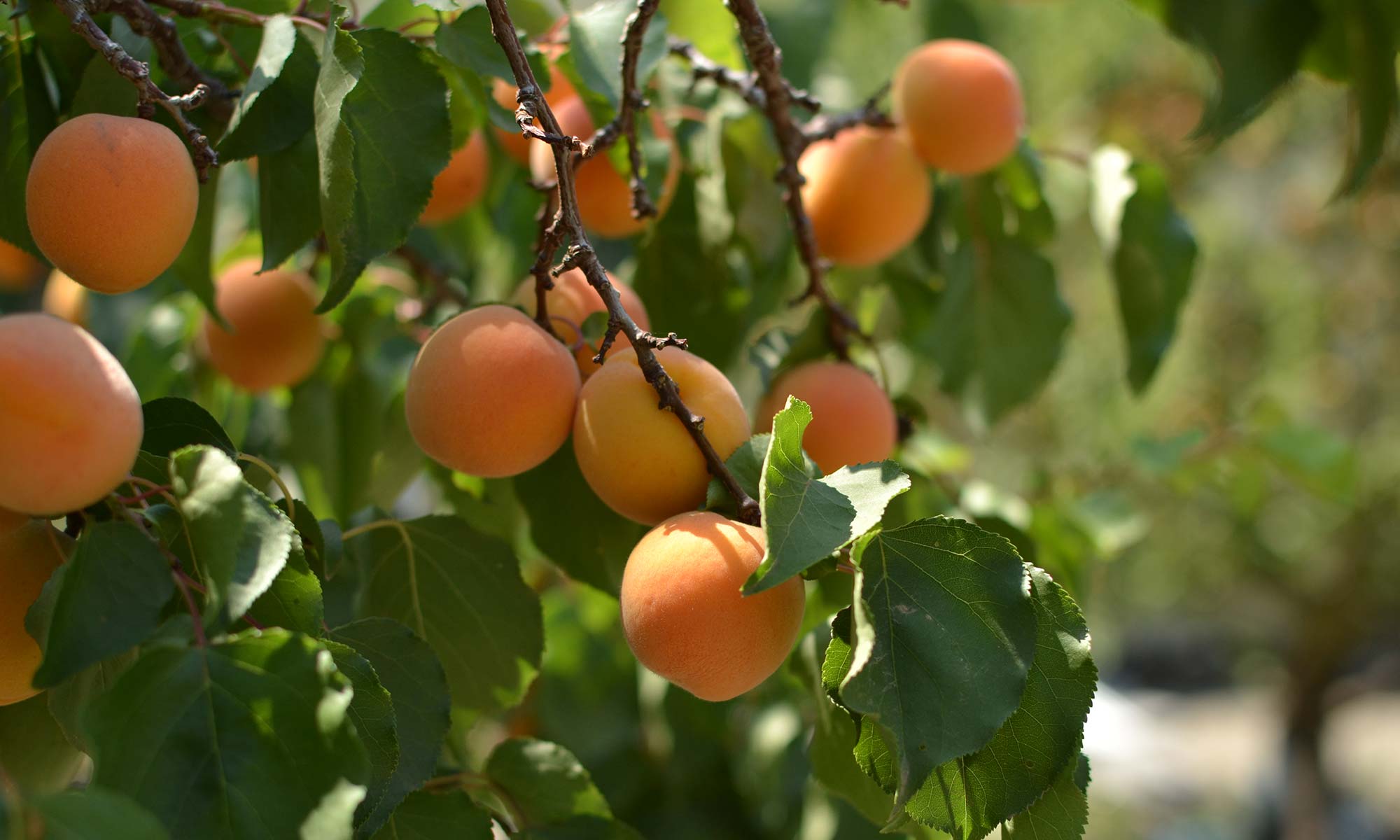
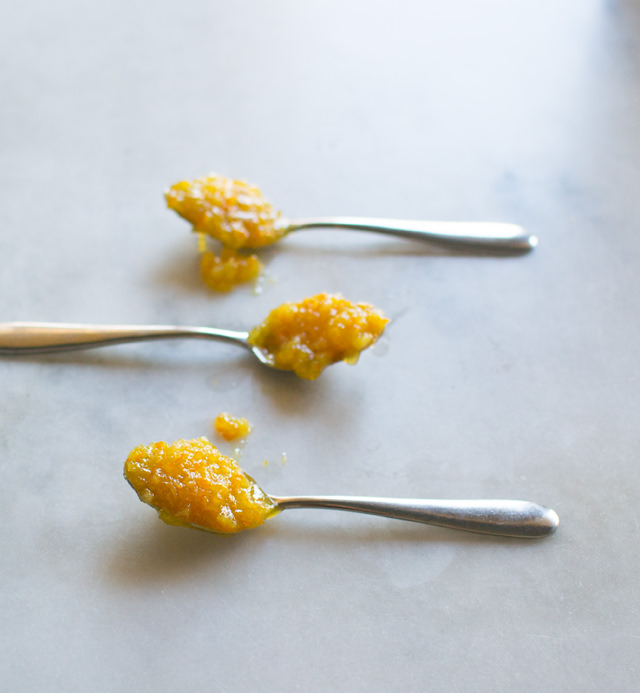
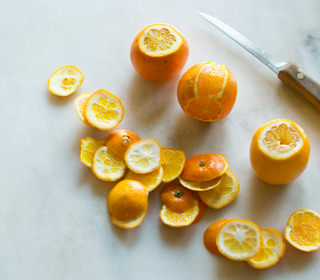
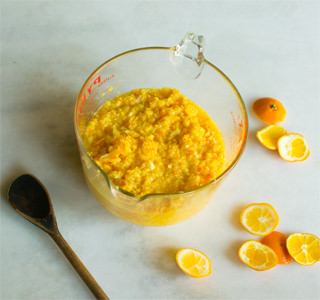
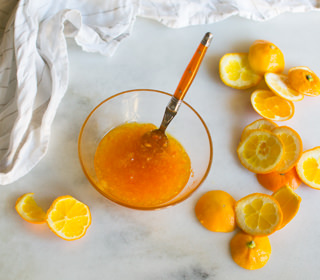
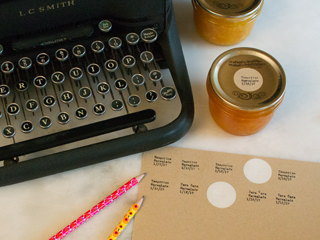
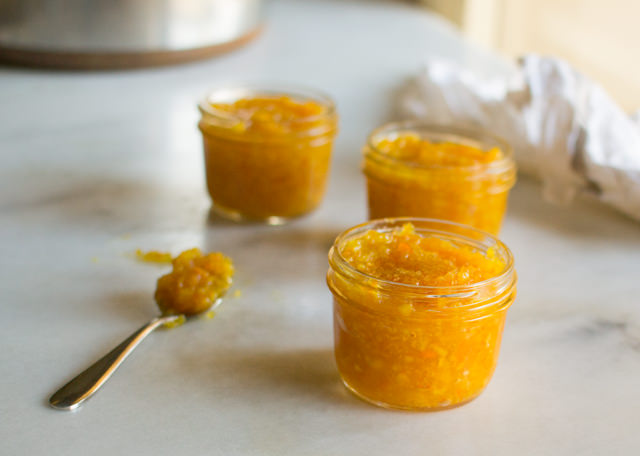
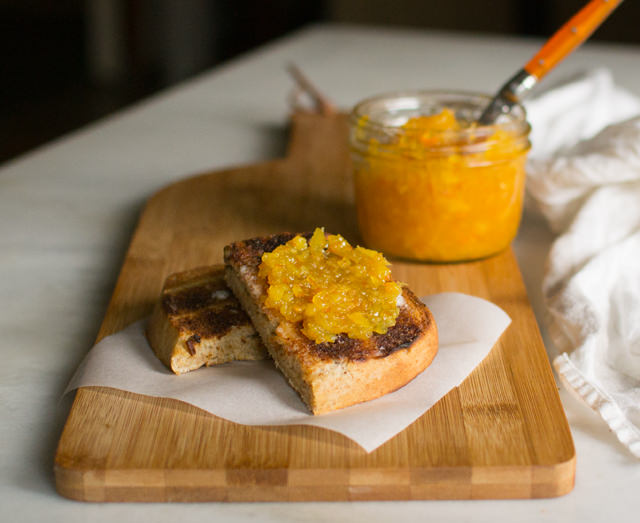
That canning challenge sounds like so much fun! And citrus anything is terrific in marmalade. I almost never make it — something I really should do much more often (love it when I do). Fun read — thanks.
Thank you John! I agree, marmalade is wonderful.
Oh dear, now you speak my language 🙂 When life gives me fruits and flowers I make the jams! Thank you very much and have a very nice day !
Thank you 2pots2cook!
I’ve never been successful with marmalades so I’m thrilled see this! Just bought a huge bag of Cara Cara so I’ll be giving your method a try. Thanks!
Thank you MJ! I love making jam and marmalade, but am always looking for time savers.
I love these tips, but I especially love how this post brightened this rather cold day with thoughts of citrus and bubbling marmalade 🙂
Thank you! Making marmalade does chase away the winter blues.
Hi Deb, wow! 2 batches, that is fantastic, bet they both are delicious. I am following the same challenge and learned some interesting techniques. Your presentation is gorgeous.
Thank you Cheri! Making marmalade is so rewarding!
I can’t wait for all the wonderful canning recipes you are going to post What fun! Your two different marmalades look fantastic. I love to try them.
Thank you Gerlinde! Let’s have a marmalade tasting! Your blood orange marmalade is lovely!
When we sold our orchard and moved from New Hampshire to Florida, I sold all of my canning equipment. Your marmalade recipes are making me wish I hadn’t. 🙂
Thank you Karen! I would have a difficult time downsizing! I tend to flit about my hobbies, going from one to another….
They both sound delightful. Like sunshine in a jar!
Thank you Jacquee! Winter citrus harvest is indeed a jolt of much needed sunshine!
I can imagine the process of making marmalade is as pleasurable as consuming the result! Looks delicious Deb!
Thank you Cathy! Making marmalade is a citrus lovers dream come true.
Cara Caras, Meyer lemons, Satsumas — they’re all my favorites!! LOVE citrus season, and these marmalades are a lovely way to celebrate it. The Food in Jars Mastery Challenge sounds like such a great project to be a part of — what fun!
Thank you Valentina! I hope I will continue with the challenge and try something each month this year.
That color is like a ray of sunshine. Gorgeous marmalades, the perfect way to bring the sun in on these rainy winter days!
Thank you Laura! Making marmalade is is fabulous sensory experience!
Deb, your post has woken me up to citrus season and marmalade making time. A number of years back, I made orange marmalade using fruit I snatched from an old abandoned yard. It was the first and only time I have made marmalade and it was delicious. The tree still exist and someone now lives in the house. I’m tempted to knock on their door and boarder some of my marmalade once it’s made for their oranges. Hopefully they’ll oblidge.
Thanks for the hint about using the processor. I’m in support of any time saving techniques.
Thank you for the inspiring comment Mary! I’ve traded the bounty from neighborhood fruit trees for jam and marmalade before. Honestly, no one has ever turned me down. A lot of home grown citrus is never used!
It looks absolutely stunning and so flavorful. Love to eat it on toasts and also cheeses.
Thank you Denise! I’m in love with the Tangerine Marmalade!
Looks so bright and cheery!
Thank you Carol! I appreciate your stopping by!